Which of these 9 turbocharged sectors will continue to surge
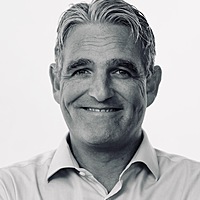
Innovate. Disrupt. Iterate. Deliver. These four words have a very modern ring but there's nothing especially modern about them. They apply equally to the creation of the loom, the steam engine, and the machinery of mass production, from hundreds of Model T's wobbling off a conveyor belt to Amazon's 200,000 zigzagging fulfilment centre robots a century later. Further back, the stirrup was the innovation that disrupted horse-riding and made possible Genghis's galloping hordes. The innovation of the axle and its subsequent iterations are what really gave the wheel its place as humanity's central invention.
But sometimes conditions arise - wars, climate change, a rolling global pandemic - that speed things up with astonishing force.
And what has made the last 18 months so extraordinary is that the pace at which things were already changing just went and sped up all the more. The pandemic - the lockdowns to be specific - had a turbocharging effect and nowhere more than in digital consumption.
That's the view, at any rate, of the consumer analyst team at Lazard Asset Management, who have just released their outlook on the prospects for a post-COVID World in the following highly dynamic and disruption-heavy sectors most affected since March 2020.
Lazard's nine key turbocharged sectors
- China
- Gaming
- Beauty
- Educational technology
- Digital medicine
- Advertising
- Groceries
- Commercial Real Estate
- Airlines
In the wire below I summarise the key takeaways for each of the above sectors in the context of an essential question: Is the turbocharging impact of the lockdowns on these key sectors transitory, or longstanding?
#1 CHINA: SOME LESSONS FOR THE REOPENING
The key points put forward are that China, the first nation to be hit head-on by COVID 19, may well have in its reopening a model of the world's immediate post-pandemic future. While things like "the 80% surge in online gaming during the lockdowns are unsustainable, the lockdowns set in motion profound changes that are starting to take place in consumer-facing industries globally," including:
Luxury vehicles: "Supported by government policies favouring private transportation over public to limit COVID-19’s spread, the growth in luxury vehicle sales at price points above roughly $40,000 continued through 2020’s lockdown at the 9% pace set in the two preceding years."
Entertainment: "As restrictions eased, China went on to answer the question of whether cinemas will ever come back with a resounding yes over the New Year holiday when box office receipts broke previous records."
Jewellery sales: "In jewellery, online orders, which accounted for only 7% of total retail sales in 2019, amounted to close to 20% in 2020."
Domestic Travel: "By September 2020 domestic travel had gained back all it had lost in the lockdowns. International travel, however, remains moribund, with authorities discouraging it. Especially hard-hit is the offshore province of Macau, a favoured resort and gambling destination."
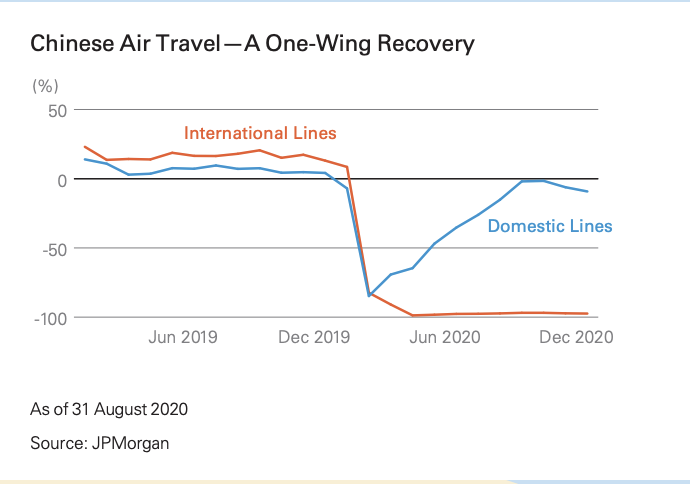
#2 GAMING: HOW MANY OF THE NEW GAMERS WILL KEEP ON GAMING?
If lockdown was going to have a positive upside effect on one sector it's not a surprise it is gaming (which is the playing of online video games, as opposed to online gambling, but then, 10-1 you knew that already). Anyway, strap yourself in for three mildly boggling stats, and one truly boggling one:
- In the US daily online visits to Steam, the top PC game store, rose 60%.
- In China, a nation of 600 million players, gaming on mobile jumped 50%.
- In Southeast Asia and Latin America, the leading video game publishers saw 50% gains in their player bases.
- (Cue the truly boggling stat.) It took the airlines 64 years to reach 50 million passengers. It took mobile phones 12 years to reach 50 million users. It took Fortnite four months to reach 50 million players. It took Apex Legends one month.
OK, so gaming went up during lockdown. Obviously. But what about the reforms in China?
It's a multivariate equation. China's recent regulatory crackdown poses an unknowable risk long term and in the short term has forced if not a hard decline, then a serious wobble. Semiconductors shortages have also had a dragging impact on the sector. And there are other factors, too.
So while we do know that the avalanche of new users to video gaming (oh, go on) snowballed during the lockdown, and users stay a long time, usually, before they leave, the steep curve up might well have flattened in step with the COVID curve.
"By year-end, the gaming platforms had reached new heights in the number of players, the intensity of their engagement, and the monetization of their passions. A year as unprecedented and conditions as uniformly favorable to a single industry won’t likely come again soon.
#3 IN YOUR FACE: BEAUTY GOES DIGITAL
The buying of beauty products, the act of it, has traditionally been a rather intimate even soul-bearing face-to-minutely inspected-face interaction with another physically present person: good news or bad, that will continue. But not to the same degree as it did.
Lazard's analysts observed the recent, initially tentative, shift to YouTube cosmetic demonstrations found its tipping point during the pandemic. Which is to say a captive lockdown audience meant "e-commerce market share climbed by more than 50% over the course of the year."
"A beauty adviser, before COVID-19 confined to a single shift at a single counter at a single store, could now have 24/7 global reach."
And then there's what that means for someone with real clout: The Insta-Influencer:
"Technology has also created space for the enterprising and well-placed influencer to launch a global franchise with little capital and less time, expanding the entire category."
Celebs like Rihanna and Kyle Jenner were quick to act and build audiences they can grow.
"The pop singer Rihanna created and sponsors a line of cosmetics that is arguably the first to offer shades that can complement the entire range of human skin colour. Kylie Jenner has developed a brand that leverages her vast adolescent following and puts her in a position to beat out Silicon Valley’s aspirants to become the first Gen Z billionaire"
Not only that:
The necessity of defending their franchises on the digital front opened by this influencer disruption was the mother of invention for the established beauty industry.
To achieve this, "the leading brands have developed try-on apps and have deployed artificial intelligence to generate personalised recommendations— and to put together highly customised, high-margin product offerings. Estée Lauder, to cite a noteworthy example, offers “beauty technology” on 90% of its brand websites."
What else?
Well, margins are better online if you don't need a physical store. You can develop customisation using AI, access emerging or hard-to-reach markets, and you can use apps to demonstrate products to professionals, such as doctors, without a physical visit, and in luminous retina-flooding high res. This is how Lazard saw it:
"By deploying and continuously upgrading technology to replace the human touch right through the pandemic, the most personal, one-to-one, and hands-on of businesses bridged the gap between individual and customized on one side and mass on the other and illuminated possibilities across the entire consumer universe."
To be fair that's a bit rich. The entire consumer universe? Get. A. Grip. But then there's no denying the pick-up.
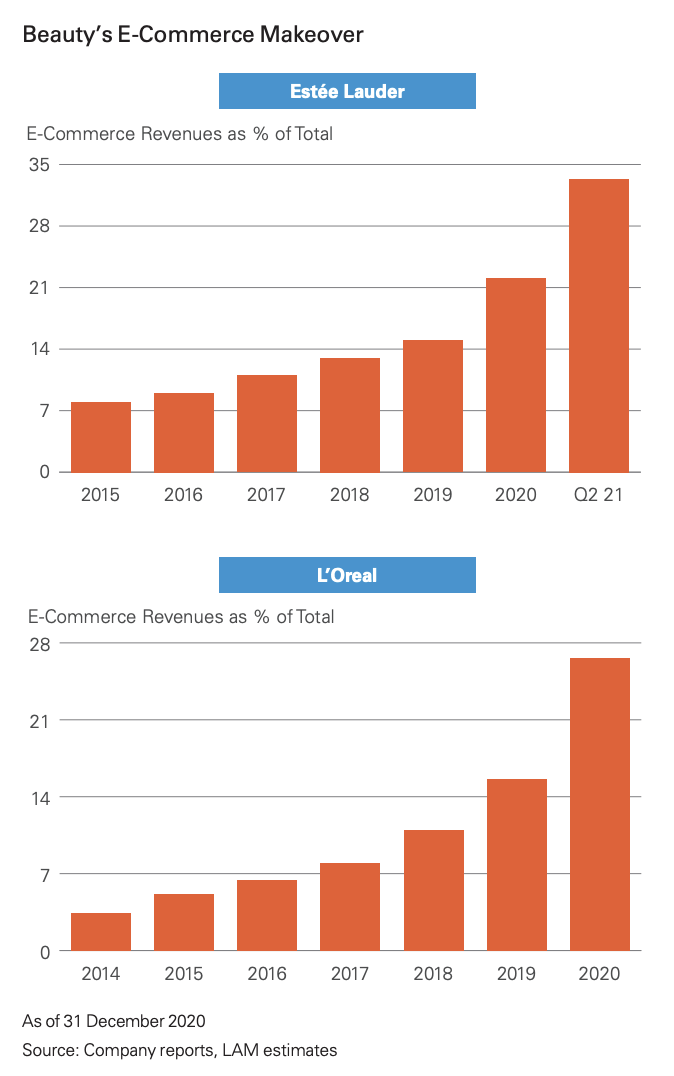
#4 ED-TECH? LEARN TO GET USED TO IT
Lazard estimates the global education industry at "$5 trillion in 2020, or about 10% of the world’s aggregate GDP."
A huge number, with only a tiny proportion - 3% - claimed by online, "virtual learning".
During the lockdown in the US Lazard says that full time online primary school education went up 30% but that doesn't mean big numbers, not yet. But the shift to online adult education could be more lasting, however.
A lesson learnt?
Lazard believes “Edtech” attained a secure foothold during the pandemic and will go on from there. In-person learning may pick up where it left off in elementary education, but edtech has found a niche as a homework helper and study aid. Its prospects in higher education have brightened as well.
"Interactive digital courseware, with built-in capabilities to proctor exams, grade papers, and provide students with immediate and 24/7 feedback, has allayed much initial professional educator skepticism. It figures to have a large role in the $750 billion allocated to community college support in the 10-year infrastructure proposal recently passed the US Senate."
#5 DIGITAL MEDICINE
The COVID-19 pandemic also proved to be a catalyst in mass healthcare delivery, especially for China's ageing and remote populations, where digital solutions stepped in where infrastructure was absent,
"One leading digital provider, Ping An Good Doctor, calculated that patients had to endure up to three hours in commuting and waiting time for an eight-minute face-to-face consultation with their physician. The emergency rooms in the hospitals equipped with intensive care units, about 8% of the national total, received about half the outpatient visits."
Two Numbers Say it All
- Average Waiting Time in a Doctor’s Office in China: 180 Minutes
- Average Waiting Time for an Online Medical Consult in China: 8 Minutes
With megatech platforms such as Alibaba, Tencent, and JD.com driving online registrations "China’s e-commerce penetration exceeded that of the United States. Over the course of the pandemic year the number of registered users on the Ping An Good Doctor app, the largest provider of online physician consults, rose to 373 million, and monthly “house calls” topped 72.5 million. Revenues at Alibaba Health, the largest online pharmacy, grew by 70%.
Lazard believes the end of lockdowns won't reverse the trend and that it is firmly set to develop further, with a recent survey indicating high satisfaction levels and a growing reliance on online healthcare:
"Ping An Good Doctor foresees 30%–40% of the nation’s outpatient volume ultimately migrating online. The government has an interest in promoting the trend. Not only does it relieve pressure on the hospitals, improve healthcare, and reduce costs, for a population where privacy is not a priority, it opens possibilities for health passports, contact tracing, and pinpoint quarantines."
#6 ADVERTISING:
Online owns advertising, there's no question. It's come more recently, however, than you might think. As Lazard notes:
"In 2016 TV ad revenues held a 1% edge over digital, each commanding a little better than one-third of a $192 billion market. Last year, digital claimed a 44.9% slice of the $234 billion expenditure pie, taking share from TV and every other advertising medium."
What happened to online advertising during the pandemic provides a key example of Lazard's thesis about accelerating trends acquiring even greater velocity.
One source, eMarketer, forecasts that time spent online per capita in the United States will rise from the six hours and 20 minutes recorded in 2018 to an estimated eight hours and two minutes in 2022, a gain of 26%. Of that five-year increase, better than half, 15%, took place over the lockdown year of 2020.
And the Big Three just got bigger
The unrelenting titans of online advertising - Google, Facebook, and Amazon snaffled even more of the market with "a combined 90% share in the United States in 2020, a gain of 10 pre-pandemic percentage points. They regained their footing quickly as advertisers concentrated their impacted budgets, abandoning lower-quality display advertisers. And now the increased attention on privacy may well enhance their pre-eminence."
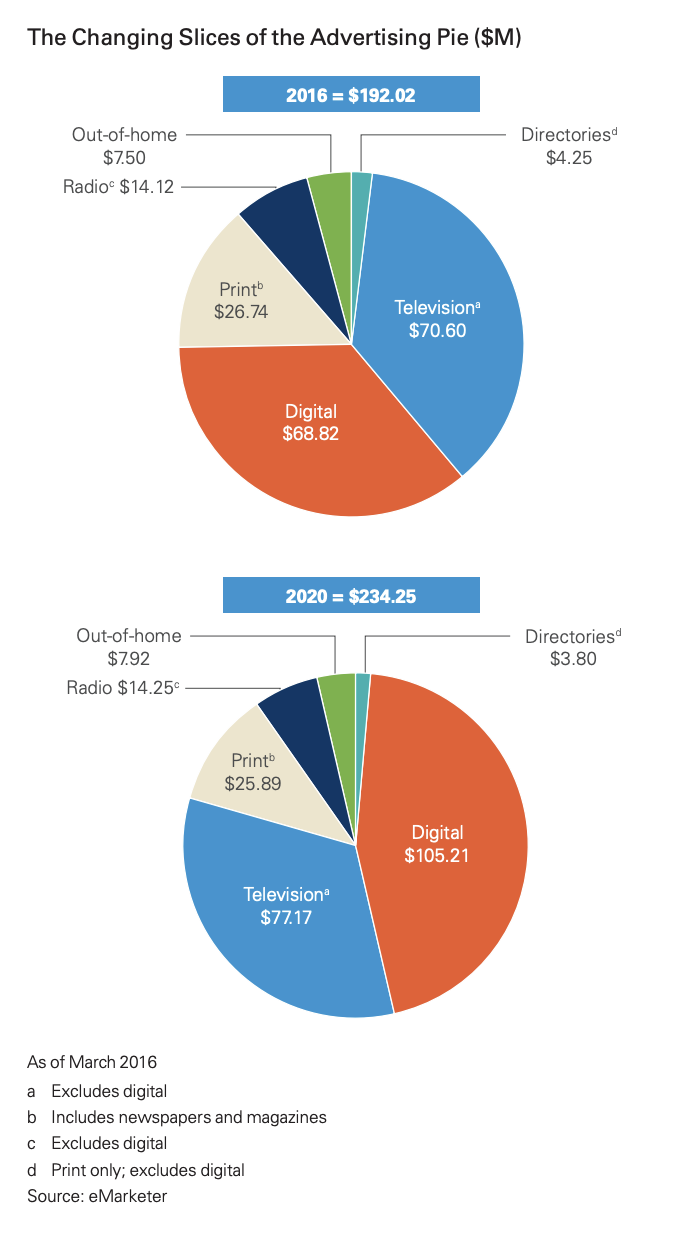
Lazard did sound a warning note about the prospect of increased regulatory scrutiny, and growing concerns around privacy proving to be a handbrake for these runaway advertising trains. TV meanwhile faced an existential threat with the atomisation of once mass broadcast audiences into niche streaming communities.
#7 GROCERIES: WE DON'T ALWAYS NEED TO SQUEEZE OUR AVOCADOES ANYMORE
Before the pandemic online grocery shopping hadn't really taken off with only about 3% taking it up habitually. People like to feel and squeeze their avocadoes, smell their mangoes, snap that iceberg lettuce leaf.
Now? Not so much. The lockdowns changed everything.
"Consumers, who had been wary of letting warehouse workers or robots pick their produce for them, became suddenly reluctant to shop among other shoppers. Online grocery market share spiked from mid-March to mid-April, doubling in some countries off a low base. Having tried it once, many consumers found online convenience and home delivery preferable to the in-store hassle and the vagaries of traffic and parking. While the spike has tailed off, grocery became another industry where the shift to online has accelerated permanently.
In 2021, market researchers project that groceries purchased online will amount to an eighth of the total—more than twice pre-pandemic expectations, and about where consensus had pegged it by 2024.
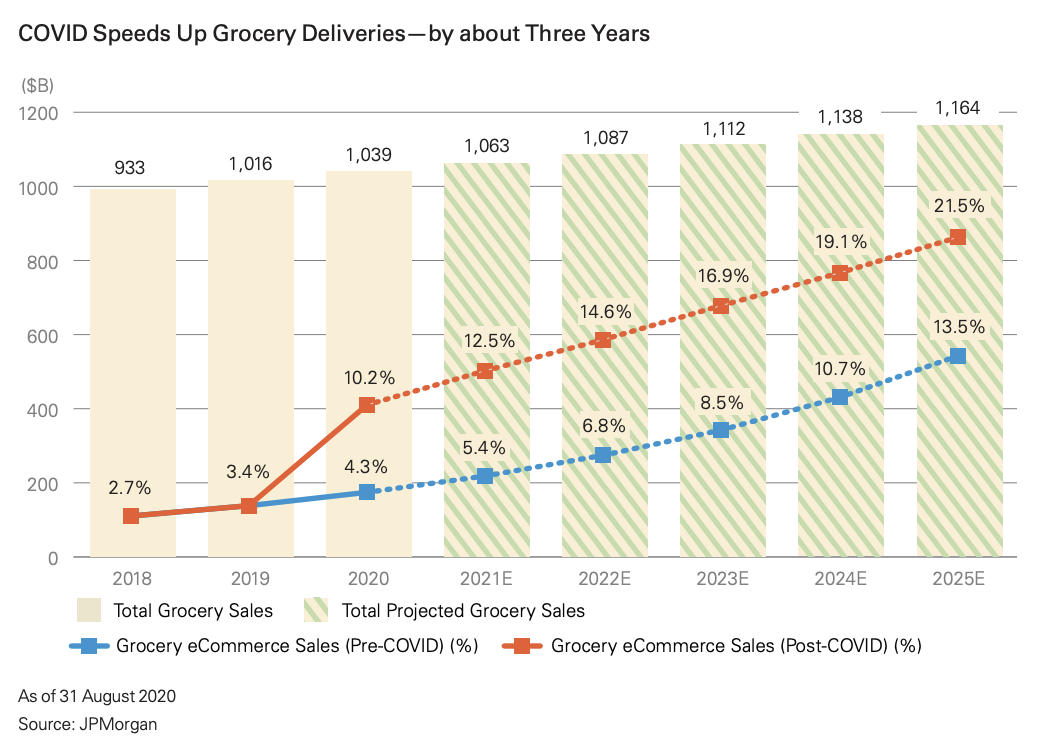
.
# 8 COMMERCIAL REAL ESTATE: CLOSER = FASTER
The massive increase in online ordering had some other profound effects. Warehouses, for instance, had to change shape to accommodate the need for machinery that would assist robots and create smaller deliverable baskets - and turnaround orders for consumers in hours rather than days, meaning sites within 100km of the delivery zone.
This had considerable flow-on effects for commercial real estate.
"Within 60 miles of downtown LA, one firm owns 85% of the logistics square footage capable of meeting quick-turn, direct-to-consumer requirements.
The “green fields” for building such a warehouse within 60 miles are in short supply, and the competition for conveniently situated open land from other commercial real estate sectors that could put it to more profitable use, notably multi-family housing, is intense.
3 POST-COVID OUTCOMES TO SATISFY DEMAND
Lazard believes a serious shortage of supply in the face of "secularly increasing demand" favours three post-COVID 19 outcomes, in our view:
- In the near term, it can translate to extraordinary earnings for the owners of appropriate warehouse space.
- In the near term as well, it will likely be easier and less costly for companies experienced in the complexities of last-mile logistics to integrate backward toward producers than it will be for companies used to dealing with the simpler logistics of loading shelves and bins to integrate forward toward the end consumer.
- Over the longer term, the decline of in-person shopping will likely hasten the arrival of hybrids that can function simultaneously as in-person markets at the front of the store and small-scale fulfilment centres in the back.
#9 AIRLINES: MORE TURBULENCE AHEAD, WITH PATCHES OF CLEAR SKIES
Which sector took a bigger hit than airlines? Cruise ships, maybe, or Hospitality. But that's about it.
- Revenues fell 40% from 2019 to about where they were in 2000.
- Domestic travel in 2020 shrunk to half of what it was the year before and international travel collapsed by three-quarters.
- Carriers cut costs by $365 billion and took on combined indebtedness through lines of credit, government bailouts, and bond issuance equal to more than half their revenue.
Despite promising signs of a pick-up, Lazard believes "the return of leisure travel is unlikely to disperse the clouds in the industry outlook." largely because the money isn't in the back of the plane -it's at the pointy end, in business and first-class.
"On a fully loaded Boeing 777 flying between London and New York, business and first-class passengers occupy 28% of the seats and account for 68% of the revenue, with business class alone accounting for 49%—as a rule of thumb, leisure travel covers the fixed capital costs, but business travel pays for the fuel and generates the profits.
Lazard quotes McKinsey's estimate that business class demand could decrease by 20%, adding that cost-cutting can only go so far: airlines also have to maintain and upgrade their fleets. Aging aircraft require more maintenance and burn more fuel, raising both costs and environmental concerns.
The upshot? Bad news for the cattle class traveller.
As a result tourist-class ticket prices will likely rise to take advantage of the leisure travel surge we anticipate. We expect them to settle at permanently higher levels to compensate at least partially for the decline in business travel.
That said, Lazard does see a couple of opportunities at the end of the runway: M&A, and the rise of short-haul specialists picking up market share from legacy carriers who find short-haul routes newly unprofitable:
- "Consolidation could restore merged airlines to profitability. The suspension of routes has created an oversupply and thus lowered the prices of the fuel-efficient aircraft the airlines will need to contain costs and stay on the right side of environmental regulation."
- "Finally, the newer budget carriers may come out as the biggest winners. Since they cater to leisure travellers to a greater extent than legacy carriers, they stand to benefit disproportionately from the general increase in tourist ticket prices. And as the legacy carriers give up unprofitable short-haul routes to secondary markets, they may open up gate slots for the budget airlines and reduce price competition.
Conclusion
The pandemic unquestionably accelerated some pathways to digital consumption, fast-tracking new efficiencies and creating new opportunities (fulfilment, warehousing, delivery), overcoming resistance to online consumption in some areas (Groceries, Cosmetics) and healthcare in others, notably China.
The jury must remain out on whether all the changes are transitory or permanent, but one thing is certain, we got to the future faster than we ever have before. Or, as Lazard put it:
"The many directions the accelerated digital evolution is taking are opening a whole new phase of economic
expansion in both the developed world and in emerging markets ...
While the COVID-19 era is not yet behind us, we believe it is the right time to attempt to distinguish between the transitory effects of lockdown and reopening and the trends that will permanently alter consumer behavior.
"Doing so calls for dispassionate analysis and intensive study of an extremely dynamic environment paired with an ongoing assessment of a management team’s ability to anticipate and adapt."
Want more content like this?
Give this wire a like if you've enjoyed the discussion and hit follow to be notified when new episodes are released.
If you're not an existing Livewire subscriber you can sign up to get free access to investment ideas and strategies from Australia's leading investors.

5 topics
1 contributor mentioned

Matt Buchanan is a former Head of Content at Livewire Markets. Matt is an avid investor and a big fan of the Livewire community, which he first joined in 2017.
Expertise

Matt Buchanan is a former Head of Content at Livewire Markets. Matt is an avid investor and a big fan of the Livewire community, which he first joined in 2017.
